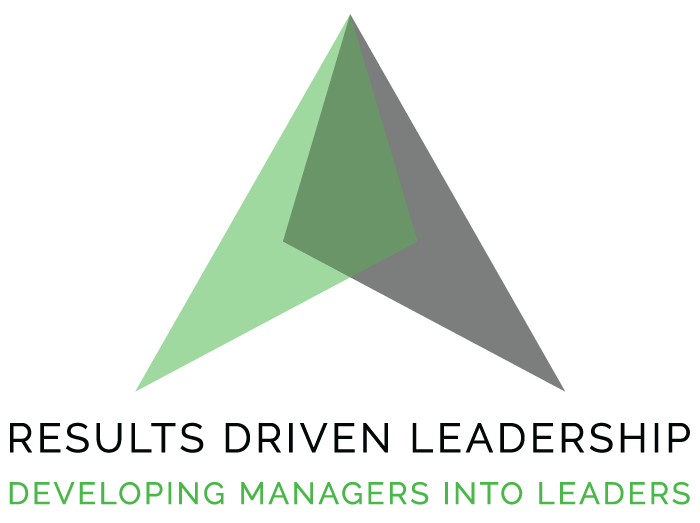TABLE OF CONTENTS
As a proponent of Results-Driven Leadership, I’d like to share my perspective on a critical aspect of leadership: discerning when to offer flexibility and when to firmly enforce rules and policies. This balance is essential for any manager aiming to lead effectively and drive results while fostering a positive and empowering team environment.
Let’s break this down in a straightforward, no-nonsense way, much like explaining how to ride a bike. We’re talking about Results-Driven Leadership, but let’s keep it as simple as pedaling forward.
What’s This Leadership Thing Really About?

Imagine leadership like riding a bike. It’s not just about getting from point A to B; it’s about enjoying the ride and ensuring your biking buddies are keeping up and having a good time. It’s the balance between speed (results) and ensuring everyone’s comfortable and confident on their bikes (team dynamics).
In my journey with Results-Driven Leadership, I’ve learned that achieving outstanding results goes hand in hand with a leadership style that values and nurtures relationships within the team. It’s about creating a synergy between driving for success and caring for the people who make that success possible.
Always remember the “Emotional Bank Account.”
Let me tell you a quick story. David was a good sales consultant, not the best and far from the worst. There were over 200 sales consultants here and 12 sales managers. Consistent and steady is how you could describe his performance. However, he was a challenging individual to manage, especially if you were a newer manager without the confidence to be challenged from time to time and not take it personally.
David would constantly challenge decisions and ask uncomfortable questions, and amongst the sales management team, he was not well-liked due to their lack of self-esteem. I’ve always loved working with these personality types, as they kept me on my toes. And I recognized individuals like David asked the questions many others had but were unwilling to ask. So, he served a purpose that was often unrecognized.
I will skip some points to shorten this story, but as the story goes, David poured it on one month. I mean, he busted his ass and sold the most he had ever sold and beat the entire sales team in total sales. In doing so, David worked 7 days a week for 30 solid days. He worked 12 to 14-hour days and, with all this, achieved a very large commission check for his efforts. He had a personal goal that he wanted to make extra income and kicked it into a gear he had never used before.
Well, while all of this was happening, not one single sales manager recognized that David was putting the work in and getting the results he was getting. Not one compliment, not one single point of recognition. I assume were for the reasons I shared previously. David was not the most popular guy on the team.
On the 29th day of the month and after running circles around most of his peers, to which not one damn thing was said to him by a manager, he is, as you may imagine, a little tired. David was scheduled to come in at 9:00, and he did not show up till 10:30. In his mind, this was justified. “Cut me a little slack; I’ve not taken a day off all month.’
When he shows up late, a manager pulls him into his office and very firmly tells him that being late is against the rules and policies, and he had better not do it again, or he would be written up.
The manager was just enforcing policy, right? However, what impact do you think this had on David? Yeah, it took the drive right out of him. Later he shared this story with me with the statement, “I’ll never bust my ass for these guys again, believe me.” And I did.
Doing the right thing, in theory, can be the wrong thing. Would this manager have done the same thing with a more popular sales consultant? Would the management team have given a more agreeable sales consultant some Atta boys and recognition for the achievements during the month?
You get the point.
Making withdrawals from the “Emotional bank accounts” of your team members is inevitable. But you must stop and consider, Am I being Fair, Am I being Consistent? Do I have enough in the bank to make this withdrawal?
Would have been the end of the world to say nothing to David when he showed up late? Of course not.
To Be a Results Driven Leader You Must Learn the Art of Overlooking!

Giving Some Wiggle Room: Like Riding with Training Wheels
When you first learn to ride, you start with training wheels, right? That’s like giving your team the space to try things out, make mistakes, and learn. It’s not about letting them veer off the path; it’s about providing enough support so they can eventually ride confidently on their own.
One of the most empowering actions a leader can take is to give their team members room to breathe, make decisions, and take ownership of their work. Even to make mistakes. Mistakes are learning opportunities, but the mistake must be learned from. Not repeated over and over.
This isn’t about being lenient; it’s about showing trust in your team’s capabilities and judgment. When you give slack appropriately, you’re not just delegating tasks; you’re delegating trust, which in turn fosters a strong sense of autonomy and accountability among your team members.
Setting the Guardrails: Knowing the Path
But, just as with biking, you need to know the rules of the road. This is where clear guidelines and expectations come in. It’s not about restricting freedom; it’s about ensuring everyone knows how to ride safely and effectively so the whole group can stay together and reach their destination.
There are times when the situation calls for a firmer hand. As a leader, it’s your responsibility to maintain order and ensure that the team’s efforts are aligned with the organization’s goals. This is where the clear setting of expectations and boundaries comes into play.
Enforcing rules and policies consistently and fairly doesn’t just maintain order; it creates a framework within which your team can operate efficiently and effectively, knowing exactly what is expected of them.
But the goal is always not to let things run amok and have the inmates running the asylum before you start enforcing. When you wait, not only are you being confusing as to where the guardrails are, but you come across as a schmuck. Firm but fair is the recipe. Avoid being Unpredictable and inconsistent at all costs. Yes, you will have some difficult conversations, but they get to be much more difficult as time goes by without course correction.
The most important element of being an effective leader is that your team “Knows What’s Expected of Them.”
Balancing Act: Knowing When to Steer or Coast
The real skill in biking, as in leadership, is knowing when to steer tightly and when to let the path guide you. It’s not a rigid formula; it’s about feeling the rhythm of the ride, understanding your team’s pace, and adjusting your leadership style to match. It’s about making the ride smooth and enjoyable for everyone.
The true art of leadership lies in knowing when to flex and when to stand firm. This isn’t a one-size-fits-all formula; it requires a deep understanding of your team, the individual strengths and weaknesses of its members, and the dynamics at play.
It’s about being adaptable, knowing when a situation calls for empathy and flexibility and when it demands decisiveness and firmness. Keeping your team motivated and engaged through this balance is what sets great leaders apart.
Tackling the Tough Hills: Guided by Principles
Every bike ride has its tough hills. In these moments, you lean on your biking know-how—shifting gears, adjusting your posture, pacing yourself. Similarly, in leadership, you draw on your principles to navigate challenges, balancing the team’s energy with the goals ahead.
Facing tough decisions is part and parcel of leadership. In these moments, the principles of Results-Driven Leadership serve as a compass. By weighing factors like individual capabilities, team dynamics, and the organization’s overarching goals, you can navigate these challenges with a balanced approach that neither compromises on the team’s autonomy nor the organization’s objectives.
Consistency: The Smooth Pedal Stroke
Whether you’re giving space or setting boundaries, being consistent is like maintaining a smooth pedal stroke. It builds trust in your leadership, much like a steady pace reassures your fellow bikers that you know the route and you’re in it together.
It’s what builds trust between you and your team. Being fair, transparent, and consistent in your actions reassures your team members that they are valued and that there’s a clear rationale behind every decision made. This trust is the bedrock of a high-performing team.
Empowering for Success: The Goal of the Ride
Ultimately, Results-Driven Leadership is about creating an environment where everyone can pedal confidently, knowing they’re supported yet free to ride in their style. It’s not just about the speed or the technique; it’s about building a team that enjoys the ride and thrives together.
At the heart of Results-Driven Leadership is the belief that effective leadership is about empowering your team to excel in an environment that’s both supportive and structured. It’s not merely a choice between giving slack or enforcing rules; it’s about cultivating a culture of trust, accountability, and growth. This is what drives a team towards achieving remarkable results.
In Summary: Keep It Simple, Ride with Purpose
To wrap it up, think of leadership like guiding a group bike ride. Keep the direction clear, adjust your pace to the group’s needs, and tackle challenges with confidence. It’s not just about reaching the end; it’s about ensuring the journey is rewarding for everyone involved.
Remember, the essence of a good ride, like good leadership, is in how you navigate the journey together. Keep it straightforward, stay focused on the path ahead, and the destination will naturally come into view. Let’s lead with clarity, integrity, and a steady hand on the handlebars.
In closing, the journey of leadership is about striking the right balance between flexibility and firmness, autonomy and accountability. By embracing the principles of Results-Driven Leadership, you’re not just making decisions; you’re shaping a culture that propels your team toward success. So, lead with purpose, navigate the challenges with confidence, and let’s drive results together.
Remember, leadership is not just about the destination; it’s about the journey and how we guide our teams through it. Let’s continue to lead with insight, integrity, and the relentless pursuit of excellence.






